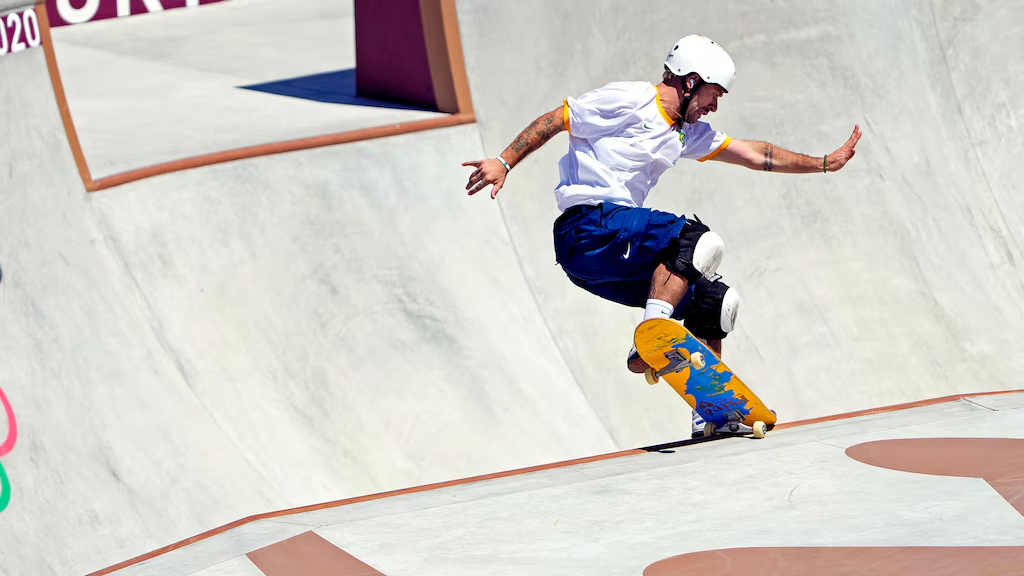The Skateboarding Olympics: From Streets to the Global Stage!
Skateboarding, once considered a rebellious street activity, has now elevated its status to become an official Olympic sport. This transformation not only highlights the sport’s growing popularity but also its cultural significance.
The inclusion of skateboarding in the Olympics signifies a monumental shift in the perception of alternative sports. In this article, we will delve into the history of skateboarding, its journey to the Olympics, what makes it unique, and its impact on both athletes and fans.
This article contains
- The History of Skateboarding
- The Rise of Skateboarding Popularity
- What Makes Skateboarding Unique
- Skateboarding’s Inclusion in the Olympics
- Skateboarding in the Tokyo 2020 Olympics: Key Metrics and Highlights
- The Future of Skateboarding in the Olympics
1. The History of Skateboarding
Skateboarding originated in the 1940s and 1950s in California, where surfers sought a way to “surf” on land when waves were flat. The earliest skateboards were simple wooden boards with roller skate wheels attached to them. Over the decades, skateboarding evolved, with significant milestones such as the introduction of the first commercial skateboard in 1959 and the development of the modern skateboard deck in the 1970s.
By the 1980s and 1990s, skateboarding had cemented itself as a cultural phenomenon, with the rise of skate parks, professional competitions, and influential skateboarding brands. The sport’s popularity continued to soar, leading to a dedicated following and a thriving community.

2. The Rise of Skateboarding Popularity
Several factors have contributed to the rising popularity of skateboarding over the years. One major factor is its accessibility. Skateboarding does not require expensive equipment or membership fees, making it an affordable sport for many. A simple skateboard and a safe area to practice are all that is needed to get started.
The media has also played a significant role in popularizing skateboarding. Movies, television shows, and video games featuring skateboarding have captivated audiences and inspired many to take up the sport. Iconic figures like Tony Hawk have become household names, further boosting the sport’s appeal.
Additionally, the DIY culture surrounding skateboarding has fostered a sense of community and creativity. Skaters often build their own ramps and obstacles, organize local events, and support one another, creating a tight-knit community that attracts new participants.

3. What Makes Skateboarding Unique
Skateboarding stands out in the Olympic lineup for several reasons. First and foremost, it embodies a blend of athleticism and creativity. Unlike many traditional sports, skateboarding emphasizes individuality and self-expression. Skaters are judged not only on technical skill but also on their style and creativity in executing tricks.
Moreover, skateboarding has a deep-rooted culture that transcends the sport itself. It influences fashion, music, and art, making it a lifestyle for many enthusiasts. The sport’s DIY ethos, where skaters often build their own ramps and obstacles, reflects a sense of community and innovation.
4. Skateboarding's Inclusion in the Olympics
The journey of skateboarding to the Olympics began in earnest in the early 2000s. The International Olympic Committee (IOC) recognized the sport’s global appeal and its potential to attract younger audiences. In 2016, the IOC officially announced that skateboarding would be included in the 2020 Tokyo Olympics.
This inclusion marked a significant milestone for the skateboarding community. It provided a platform for skateboarders to showcase their skills on a global stage and compete for Olympic glory. The Tokyo 2020 Olympics featured two skateboarding disciplines: street and park. Street skateboarding involves performing tricks on urban terrain like stairs and rails, while park skateboarding takes place in a bowl-shaped course with ramps and curves.

5. Skateboarding in the Tokyo 2020 Olympics: Key Metrics and Highlights
The skateboarding events at the Tokyo 2020 Olympics were a resounding success, drawing millions of viewers worldwide. Here are some key metrics and highlights:
- Number of Athletes: A total of 80 skateboarders from 25 countries competed in the Tokyo 2020 Olympics.
- Youngest Competitors: One of the standout aspects was the participation of very young athletes. Sky Brown of Great Britain, aged 13, and Kokona Hiraki of Japan, aged 12, became some of the youngest Olympic medalists in history.
- Medal Distribution: In the men’s street event, Yuto Horigome of Japan won the gold medal, while in the women’s street event, Momiji Nishiya, also from Japan, clinched the gold. In the park events, Australia’s Keegan Palmer and Japan’s Sakura Yosozumi took home gold in the men’s and women’s categories, respectively.
6. The Future of Skateboarding in the Olympics
As skateboarding continues to evolve, its future in the Olympics looks promising. The success of the Tokyo 2020 events has set a strong foundation for future Olympic Games. Skateboarding is set to return in the 2024 Paris Olympics, where it will once again captivate audiences with its unique blend of athleticism and creativity.
Looking ahead, we can expect to see even more diverse participation, with athletes from various countries and backgrounds showcasing their talents. The sport’s growing popularity will likely lead to increased investment in infrastructure, training programs, and youth development initiatives, further solidifying skateboarding’s place on the global sports stage.

Conclusion: The Skateboarding Olympics: From Streets to the Global Stage
The skateboarding Olympics represents a significant chapter in the sport’s history, showcasing its evolution from a countercultural activity to a globally recognized athletic endeavor. With its unique blend of creativity, athleticism, and cultural influence, skateboarding has firmly established itself in the Olympic arena. As the sport continues to grow and evolve, its presence in the Olympics will undoubtedly inspire future generations of skateboarders to push the boundaries of what is possible.
Further Reading and resources
For more in-depth information and resources, consider the following links:



